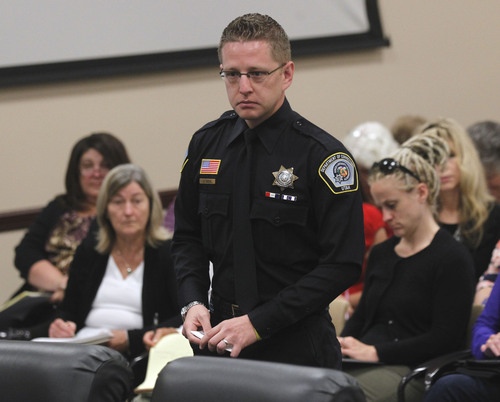This is an archived article that was published on sltrib.com in 2013, and information in the article may be outdated. It is provided only for personal research purposes and may not be reprinted.
There really is only one question that the Utah Prison Relocation Authority Committee should answer as it examines the idea of moving the existing penitentiary from its urban setting to a more remote one: Would the state have a better prison then than it does now?
Would a new prison, in some as-yet-undetermined spot, better serve the needs of taxpayers? Would it do a better job of preparing the vast majority of inmates who will be rejoining society with the tools to do so successfully? Would it be able, in furtherance of those goals, to attract and keep good employees — guards, doctors, educators — and volunteers? Would it help prisoners stay in touch with their families and anyone else whose assistance and understanding will be necessary for them to cross the bridge from inmate to citizen?
All those questions are so much more crucial than the brainstorm that led to the creation of the panel: Can the state — or someone — make a ton of money by selling the Draper site, already surrounded by rapidly urbanizing Salt Lake and Utah counties, to private developers?
The quality of a new prison compared to the existing one is even more important than the matter of how that land, if rapidly developed into houses, malls and schools, would strain the tax base, stress the environment and further befoul the air.
According to testimony the panel heard Monday, the key question of whether Utah taxpayers would get a better prison for the proposed uprooting of their existing one would likely be no.
Panel members were told in some detail how the prison is already having a hard time keeping its ranks of guards and other personnel full because the mere rumor that the facility might move to some rural area has encouraged current workers to depart and potential workers to look elsewhere.
Distance will also be an issue for the many volunteers, who provide much of the work helping inmates to keep their psyches together while approaching release, and for the families whose role in an inmate's reintegration is key.
There is also value in not having a prison that is out-of-sight, out-of-mind. The high visibility of the current lockup serves as a reassurance for those who have been, or fear being, victims of crime. It serves as a warning for those who might be contemplating illegal acts.
And it provides for all the rest of us the reminder that we, as taxpayers, citizens and fellow human beings, are responsible for operating a prison that holds and punishes criminals, but that does not break souls and so encourage more crime.



